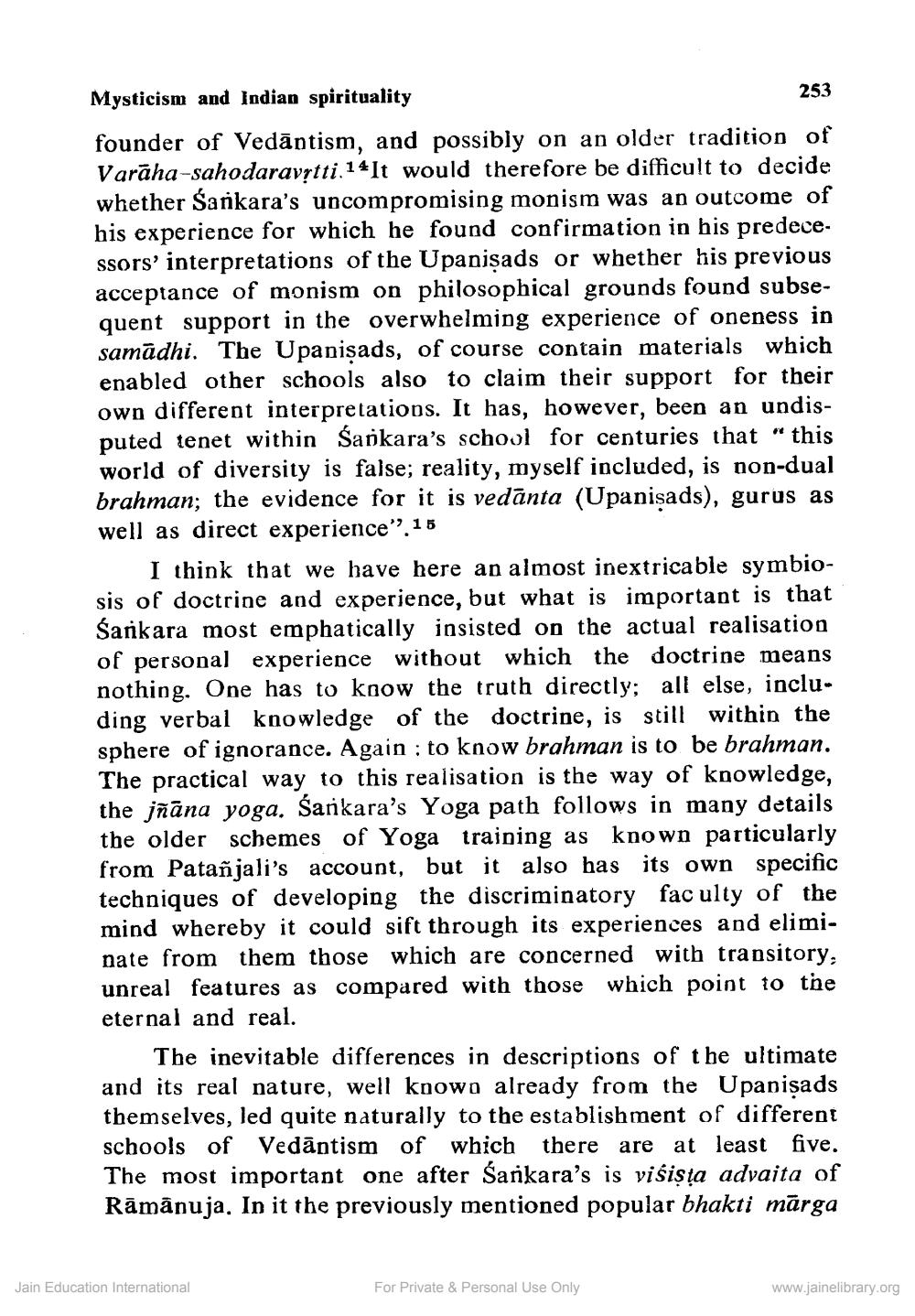________________
Mysticism and Indian spirituality
253
founder of Vedāntism, and possibly on an older tradition of Varāha-sahodaravrtti.14It would therefore be difficult to decide whether Sarkara's uncompromising monism was an outcome of his experience for which he found confirmation in his predecessors' interpretations of the Upanişads or whether his previous acceptance of monism on philosophical grounds found subsequent support in the overwhelming experience of oneness in samādhi. The Upanişads, of course contain materials which enabled other schools also to claim their support for their own different interpretations. It has, however, been an undisputed tenet within Śarkara's school for centuries that "this world of diversity is false; reality, myself included, is non-dual brahman; the evidence for it is vedānta (Upanişads), gurus as well as direct experience” 15
I think that we have here an almost inextricable symbiosis of doctrine and experience, but what is important is that Śarkara most emphatically insisted on the actual realisation of personal experience without which the doctrine means nothing. One has to know the truth directly; all else, including verbal knowledge of the doctrine, is still within the sphere of ignorance. Again : to know brahman is to be brahman. The practical way to this realisation is the way of knowledge, the jñāna yoga. Śarkara's Yoga path follows in many details the older schemes of Yoga training as known particularly from Patañjali's account, but it also has its own specific techniques of developing the discriminatory fac ulty of the mind whereby it could sift through its experiences and eliminate from them those which are concerned with transitory, unreal features as compared with those which point to the eternal and real.
The inevitable differences in descriptions of the ultimate and its real nature, well knowo already from the Upanişads themselves, led quite naturally to the establishment of different schools of Vedāntism of which there are at least five. The most important one after Sarkara's is visisța advaita of Rāmānuja. In it the previously mentioned popular bhakti märga
Jain Education International
For Private & Personal Use Only
www.jainelibrary.org




